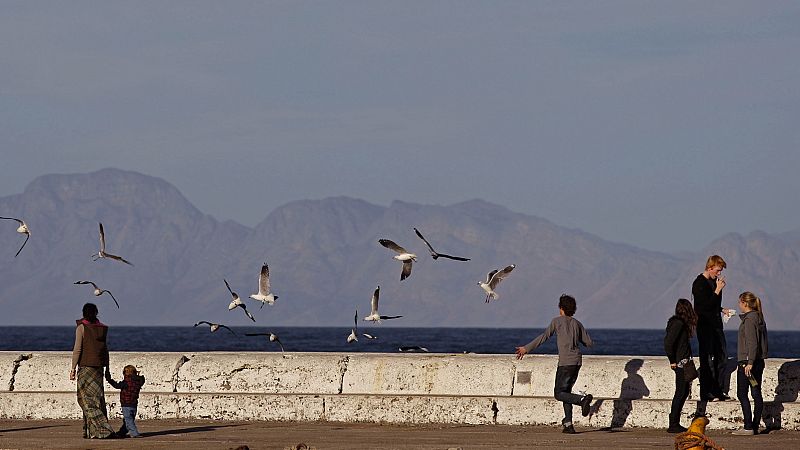Tourists, wildlife attempt amicable co-existance at Cape Town harbour

The Victoria and Alfred Waterfront is a working harbour that incorporates 800 businesses such as shops and restaurants.
25 million people visit this Cape Town tourism hotspot every year, according to the V&A Waterfront.
As well as shopping, commerce, sailing, shipping and residential buildings, the V&A Waterfront is also home to marine and other wildlife which inhabit the harbour.
Two of the V&A Waterfront’s three Harbour Monitors are Ayanda Cimani and Alvero Malan.
One of their key tasks is to prevent human-wildlife conflict, such as ushering these Cape Fur Seals away from the jetties used by people.
They check boats and yachts too, for squatting seals.
The Harbour Monitors also ensure public keep their distance from wild animals.
The harbour’s Cape Fur Seals have been provided with two seal platforms that they can easily access and are solely for their use.
Checking the seal platforms is part of Harbour Monitor Ayanda Cimani’s daily rounds.
“Every morning I go to the seal platforms to check how many seals are present and check for any injured seals. I also check if there are any seals that have fishing line, rope or plastic entanglements.”
If a seal is found tangled in plastic waste the Harbour Monitors use a special tool to approach the animals without being seen, the tool can safely remove box straps, ropes, plastic bags or anything else the seals can't get rid of.
It's important the plastic is removed as it starts to choke the animal as it grows.
According to the monitors, entanglements can lead to a slow death.
Martine Viljoen works for the Marine Wildlife Management Programme at the V&A Waterfront's Two Oceans Aquarium.
She also manages the Harbour Monitors who have removed over 500 entanglements from Cape Fur Seals since the Harbour Monitor initiative started in 2018.
“You feel like the seals are kind of like messengers from the ocean. They’re bringing back this message of what’s happening out there. They’re bringing it to us. So, we’re finding that a lot of seals, they’re coming in to our harbour space, hauling up, and they are all entangled in these loops of plastic,'' said Viljoen.
Another wildlife species found living at the V&A Waterfront is the Cape Clawless Otter.
Harbour Monitor Abdullah Abrahams has been focussing primarily on Cape Clawless Otters over the last three years.
Abrahams says otters discovered they could roam freely all over the V&A Waterfront during COVID-19 lockdowns.
Although they hunt and feed in seawater, these urban otters need access to freshwater on a daily basis to drink and wash.
Hotel swimming pools are now better secured and the otters still like exploring the nooks and crannies of the harbour.
Abrahams looks out for urban otters regularly and also checks on cameras hidden in their dens to ensure the welfare of these intelligent and inquisitive creatures.
According to the Waterfront’s Donald Kau, since the establishment of the V&A Waterfront in 1990 the goal has been to allow people to access the water and see the wildlife.
Yesterday

